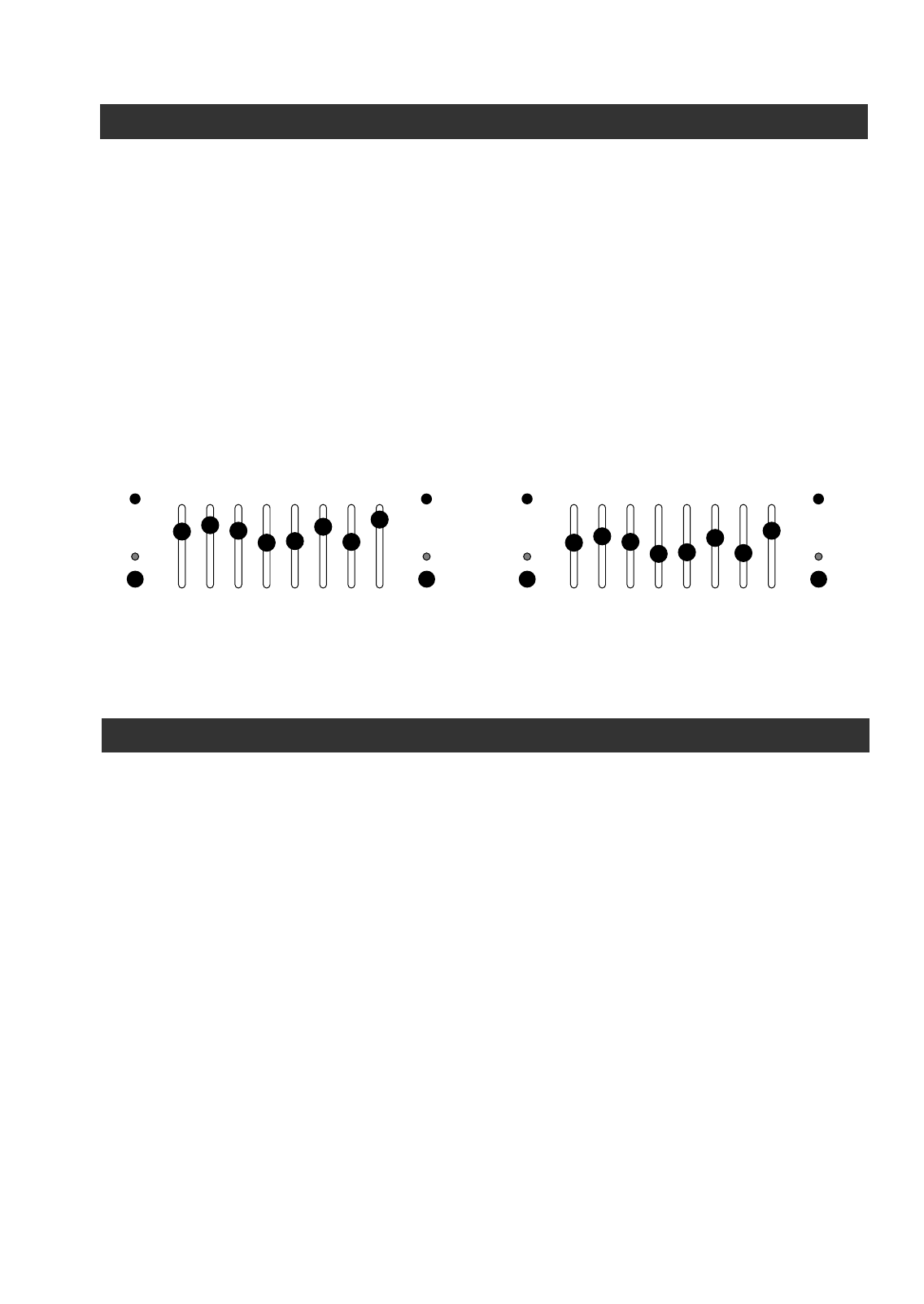
21
Pro Tube IV
1 2
70 140 210 420 730 1,2k 2,5k 5k
.
.
.
.
.
.
.
+12
+8
+3
0dB
-3
-8
-12
+12
+8
+3
0dB
-3
-8
-12
.
.
.
.
.
.
.
.
.
.
.
.
.
.
.
.
.
.
.
.
.
.
.
.
.
.
.
.
.
.
.
.
.
.
.
.
.
.
.
.
.
.
LOW
BOOST
HIGH
BOOST
2
2
70 140 210 420 730 1,2k 2,5k 5k
.
.
.
.
.
.
.
+12
+8
+3
0dB
-3
-8
-12
+12
+8
+3
0dB
-3
-8
-12
.
.
.
.
.
.
.
.
.
.
.
.
.
.
.
.
.
.
.
.
.
.
.
.
.
.
.
.
.
.
.
.
.
.
.
.
.
.
.
.
.
.
LOW
BOOST
HIGH
BOOST
2
2
CHANNEL 2 - SOLID STATE
Tw o switches LOW BOOST and HIGH
BOOST to pre-adjust the basic sound
characteristics.
Eight faders
70/140/210/420/730/1.2k/2.5k/5kHz
to amplify/soften the respective frequency
band by +/-12 dB.
You should generally adjust the graphic EQ to
approximately 0 dB. This means boosts and cuts
should be effected with moderation.
When adjusting the faders mostly within the
positive area (1) the OL LED of the master
section might illuminate, which means you enter
the overload range before the master control. In
this case reduce OUTPUT from channel 2. If the
LIMITER is activated and threshold appears too
high, readjust the EQ curve to lower levels (2).
Reducing GAIN would result in a worse S/N
ratio and can eventually not be recommended.
Should you find the threshold is too low, i.e. more
intense compression is desired, shift the EQ
curve further to the positive area.
GETTING STARTED
1. Make sure that loudspeakers capable of
sustaining the load of a bass signal are
connected to the SPEAKER OUT sockets.
The speaker cables should meet a cross-section
of at least
2 x 1.5 mm.
2. Check that the mains supply has been plugged
in and that all external (effects) units possibly
used are correctly connected and operational.
3. Set the MASTER control to zero.
4. Plug your bass guitar into the amplifier's
INPUT with a shielded line-cable.
5. Press the POWER switch to turn the device
on.
6. Switch MUTE off and the red LED will
extinguish. (Should the CH. SELECT switch
be set to channel 1, it will take a few seconds
before a signal can be processed, as the tubes
must be heated first.)
7. Turn all volume controls of your bass guitar on
to their maximum.
8. Adjust the GAIN control until the (loudly)
played bass signal illuminates the OK LED.
9. Set both OUTPUT controls to their positions
8.
10.Set the MASTER control to the volume you
wish to play at.
11. Adjust the controls and switches of both
channels according to your sound conceptions.
If it appears necessary, reduce OUTPUT again
with the appropriate controls. The OL LED
might actually flash only occasionally, but it
should not remain permanently lit.
12. Balance the levels from one channel to another
with the OUTPUT controls.
IMPORTANT:
Make sure that gain of the elected louder channel
is correctly determined and occasionally
illuminates the OL LED, as either full power can
actually not be used (level set too low), or
undesired distortions might appear (level set too
high).












